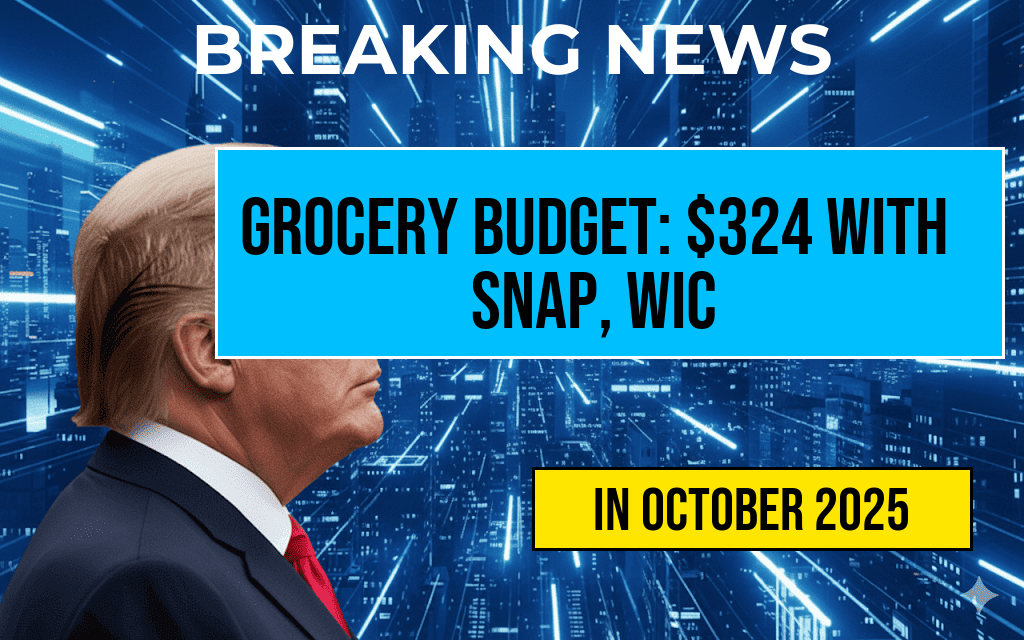Grocery Budget Breakdown: Using $298 SNAP and $26 WIC to Make $324 Last During a Shutdown
As federal government shutdowns extend into prolonged periods, families relying on assistance programs face mounting financial pressure. Recently, a single parent in Ohio demonstrated how careful planning and strategic shopping can stretch a modest combined assistance budget of $324—comprising $298 from the Supplemental Nutrition Assistance Program (SNAP) and $26 from the Special Supplemental Nutrition Program for Women, Infants, and Children (WIC)—to sustain a household through a particularly tight month. By prioritizing essential items, leveraging store discounts, and understanding program-specific allowances, this individual managed to cover nearly all nutritional needs without exceeding the budget. This example underscores both the resilience of families navigating economic uncertainty and the importance of targeted resource utilization amid systemic disruptions.
Understanding the Financial Landscape During a Shutdown
When federal agencies cease operations, many recipients of social assistance programs face uncertainty about continued benefits. While SNAP and WIC benefits are designed to provide vital nutrition support, delays or reductions can occur during shutdowns, forcing households to adapt quickly. The example of a family in Ohio demonstrates how a combined $324 can be allocated prudently to cover an entire month of groceries, even with limited resources.
Breaking Down the Budget: Strategic Allocation of Funds
SNAP Benefits: $298
- Fresh Produce: $80 for seasonal fruits and vegetables, including apples, carrots, and greens.
- Proteins: $70 for lean meats, eggs, and plant-based options like beans and lentils.
- Dairy: $50 for milk, cheese, and yogurt.
- Grains and Staples: $40 for bread, rice, pasta, and cereals.
- Miscellaneous: $58 for spices, cooking oils, and pantry essentials.
WIC Benefits: $26
- Infant and Child Nutrition: Fresh baby fruits and vegetables, iron-fortified cereals, and formula.
- WIC-Allowed Foods: Specific items like cheese, peanut butter, and eggs that supplement the household’s diet.
Effective Shopping Strategies
Maximizing a limited grocery budget during a shutdown requires intentional shopping. Key tactics include:
- Prioritize Nutrient-Dense Foods: Focus on whole foods like beans, frozen vegetables, and grains that offer high nutritional value at lower cost.
- Utilize Store Discounts and Coupons: Take advantage of store sales, digital coupons, and loyalty programs to reduce expenses.
- Buy in Bulk: Purchase staples such as rice, oats, and canned goods in larger quantities to lower per-unit costs.
- Plan Meals Carefully: Prepare a weekly menu to avoid impulse buys and ensure that ingredients are used efficiently.
- Avoid Processed and Convenience Foods: While tempting, pre-packaged meals often cost more and contain less nutritional value.
Sample Weekly Meal Plan Using $324
| Meal | Ingredients | Cost Estimate |
|---|---|---|
| Breakfast | Oatmeal with bananas and a glass of milk | $3 |
| Lunch | Homemade bean and rice burritos with salsa | $4 |
| Dinner | Stir-fried vegetables with chicken or tofu over brown rice | $5 |
| Snacks | Carrots, apples, peanut butter | $2 |
By rotating these meals and sourcing ingredients from discount stores or local markets, families can stretch their dollars effectively. This approach ensures balanced nutrition while maintaining financial stability during periods of economic uncertainty caused by government shutdowns.
Broader Implications and Support Systems
While individual resourcefulness plays a crucial role, community programs and advocacy efforts are vital for addressing systemic gaps. Organizations like Feeding America emphasize the importance of expanding access to affordable food and advocating for policy changes that buffer vulnerable populations during crises. State agencies and local food banks often supplement federal assistance, providing additional support in times of need.
As the federal shutdown persists, families relying on SNAP and WIC must navigate financial constraints with ingenuity. The example from Ohio illustrates that with careful budgeting, strategic shopping, and a clear understanding of assistance programs, it is possible to make a limited budget cover essential nutritional needs. Continued advocacy and policy support remain critical to ensuring that these families do not face hunger during extended periods of government inactivity.
Frequently Asked Questions
What is the total grocery budget covered by SNAP and WIC during a shutdown?
The combined grocery budget is $324, which includes $298 from SNAP benefits and $26 from WIC benefits, designed to help families make their money last during a shutdown.
How can I effectively plan my grocery shopping using SNAP and WIC benefits?
To maximize your SNAP and WIC benefits, create a detailed shopping list focusing on nutritious, budget-friendly foods, prioritize WIC-approved items, and shop sales or store brands to stretch your budget further.
What types of food can I purchase with WIC benefits?
WIC benefits typically cover specific nutritious foods such as whole grains, fruits, vegetables, dairy, eggs, and infant formula. Check your local WIC program guidelines to understand the approved items and quantities.
Are there any tips for making $324 last during a grocery shutdown?
Yes, consider meal planning to avoid waste, buy in bulk when possible, focus on low-cost nutritious foods, and avoid impulse purchases. Using coupons and shopping at discount stores can also help extend your grocery funds.
What should I do if my SNAP or WIC benefits run out before the end of the month?
If your benefits are exhausted early, look into local assistance programs, food banks, or community resources for additional support. Planning your shopping carefully and utilizing all available benefits can help make your budget last longer.

Leave a Reply